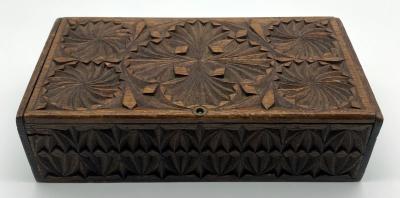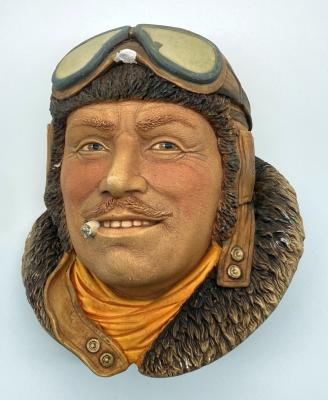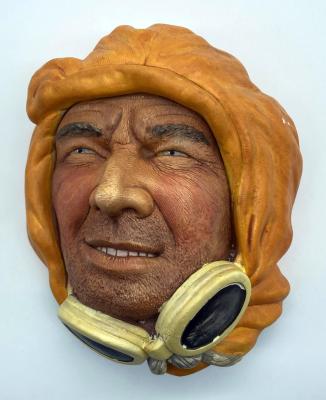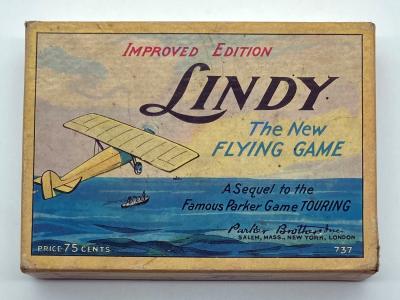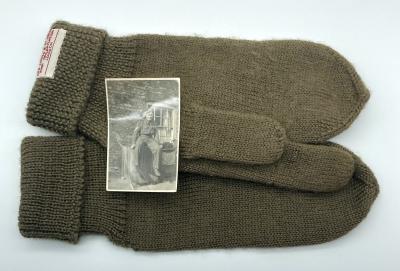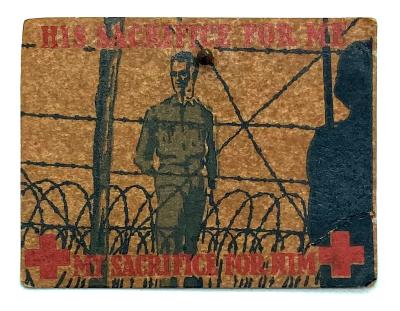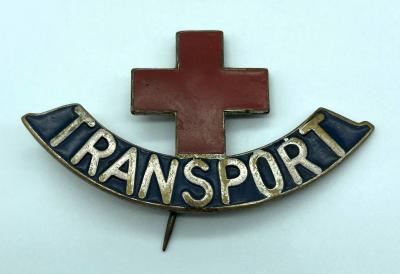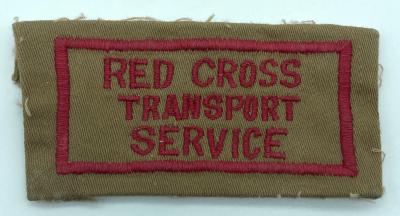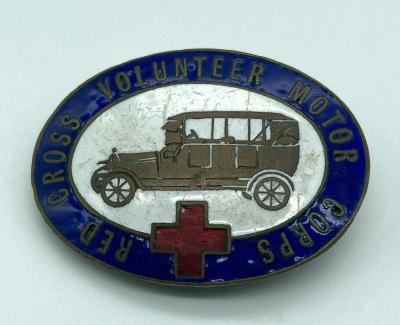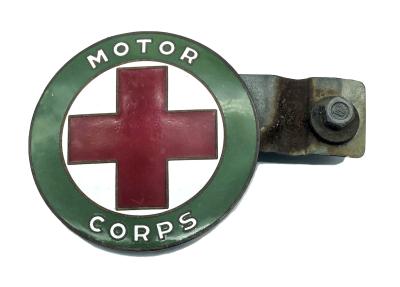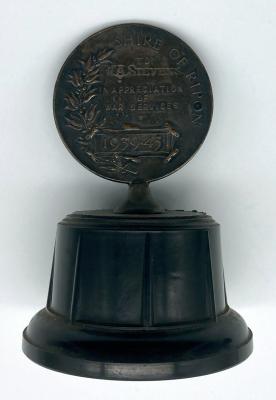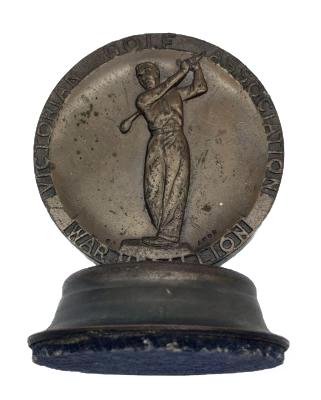Chip carved tray made by ALH Trooper John Hodgskiss
c. 1919Rectangular, stained and varnished wooden serving tray with a flat, chip carved base and attached raised timber edges to contain the items being carried.
The base has a carved border of diagonal lines in from the outer edge. The lines on the left are angled to the left from the centre and those on the right are angled to the right. There is a four pointed star within a square in each of the four corners of the border.
The patterns carved into the base of the tray are geometric in nature and feature a central motif resembling a four leaf clover with diamonds between the leaflets. Each small diamond adjoins an outer square with a rosette centre contained within the point of a star. The four pointed star is echoed by those in the border. In from either end of the tray are obtuse, isosceles triangular carvings with the long side parallel with the border. The triangles point towards the centre of the tray.
The underneath of the tray shows the unstained timber which is less red in colour than the stained and varnished upper surface. There are several metal screws around the outside of the tray which are holding the raised timber edges in place. It appears to have been made from a single piece of timber and shows black scorch marks on one edge.
John Hodgskiss (known as Jack) was born in Glenalvie, Victoria.
He was a single labourer, aged 21, when he enlisted on 31 July 1915 with the 4th Light Horse Regiment, 14th Reinforcement - service number 2029.
He embarked from Melbourne, Victoria, on board HMAT A32 Themistocles on 28 January 1916 and served in France.
He was transferred to the 2nd ANZAC Light Horse regiment as a Trooper in July 1916. He was then detached to serve with the New Zealand Division and the Anti-Aircraft Section of the 2nd ANZAC Headquarters. before rejoining his unit in August 1917.
He was hospitalised in England with synovitis of the knee. He commenced his return to Australia on board HT 'Morvada', on 4 January 1919.
He spent a long time in repatriation hospitals upon his return to Australia, initially at No. 16 AGH at Mont Park near Macleod, before transferring to No. 11 AGH in Caulfield. It was during this time that he carved this tray and a smaller cigar box which are both in the collection.
He was finally discharged (medically unfit) in Melbourne on 20 June 1920.
Chip carving is a style of wood carving in which the carver removes small, selected chips of wood from a flat surface using a sharp knife or chisel. The removed chips form part of a pattern – often based on simple geometric shapes like triangles, squares, or circles – resulting in intricate decorative designs carved into the wood, as seen in this example.
Both the tray and cigar box were purchased from a relative of Jack Hodgskiss.
Details
Details
Related Objects
Related Objects
Other items by John Hodgskiss
Other items from Recollections of War
- Painted chalkware wall hanging depicting Royal Flying Corps pilot 1917
- Painted chalkware wall hanging depicting an early Arctic explorer
- 'Lindy: the new flying game' card game
- 'The Fledgelings' card game
- Pair of knitted mittens sent to British POW, John D. McComiskey
- Red Cross cardboard fundraising pin for prisoners of war
- Australian Red Cross Society NSW Division Transport badge
- Australian Red Cross Society Transport Service cloth insignia
- Red Cross Volunteer Motor Corps enamel badge
- WWI era American Red Cross Motor Corps car badge
- Trophy presented by the Shire of Ripon to W.A. Stevens in appreciation of WWII war service
- Victorian Golf Association War Medallion won by J. Jones 1946
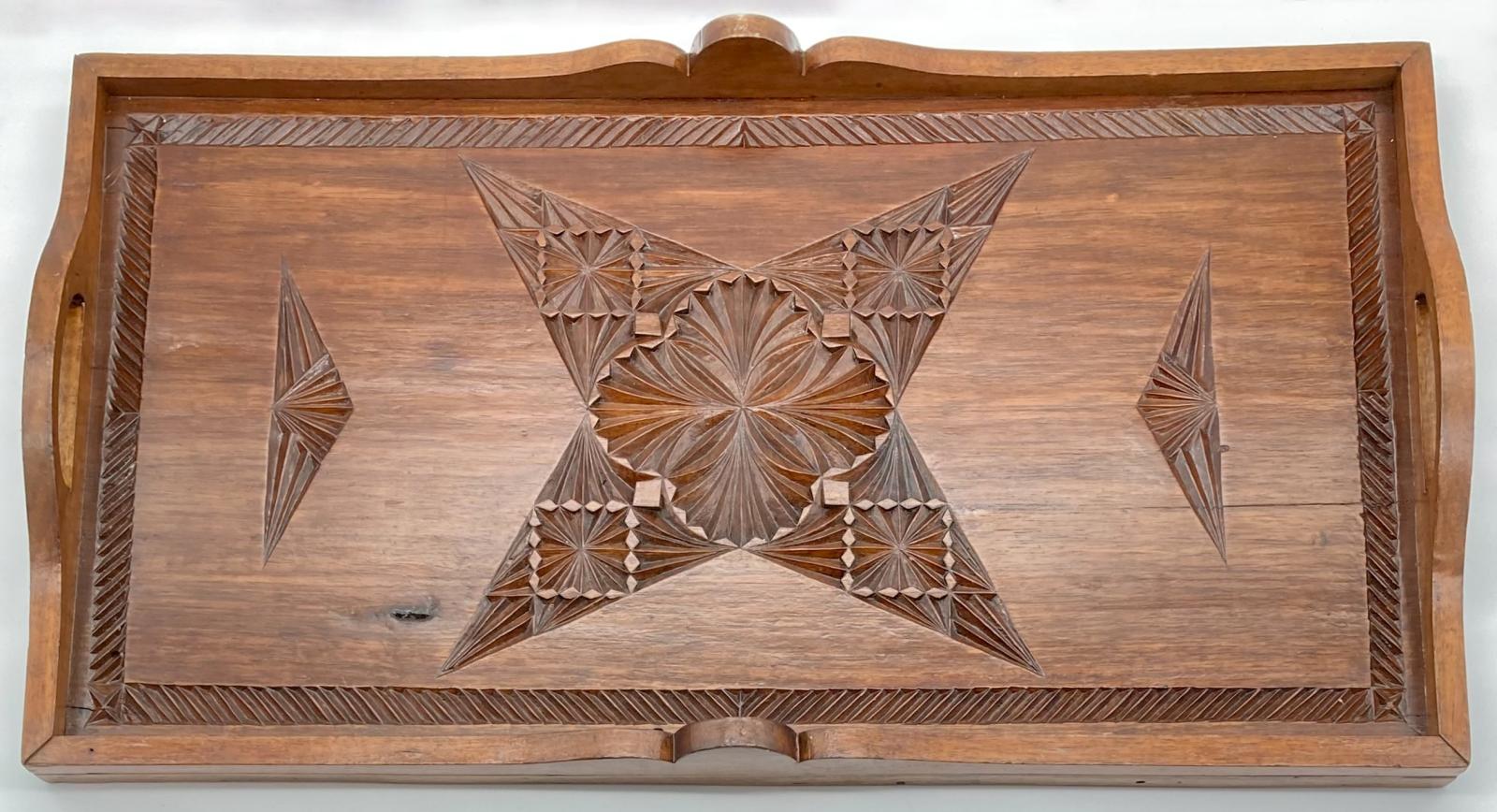
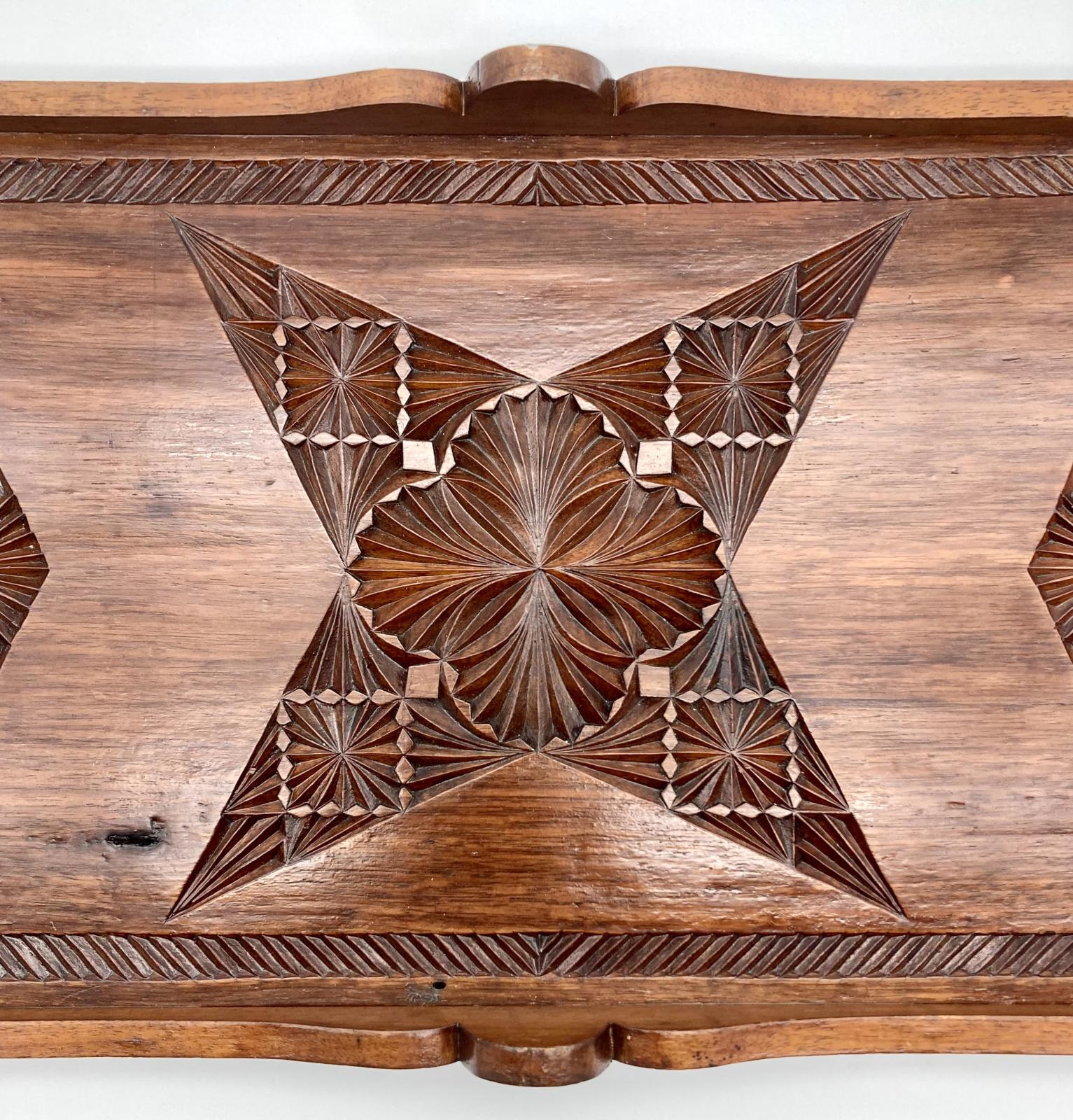
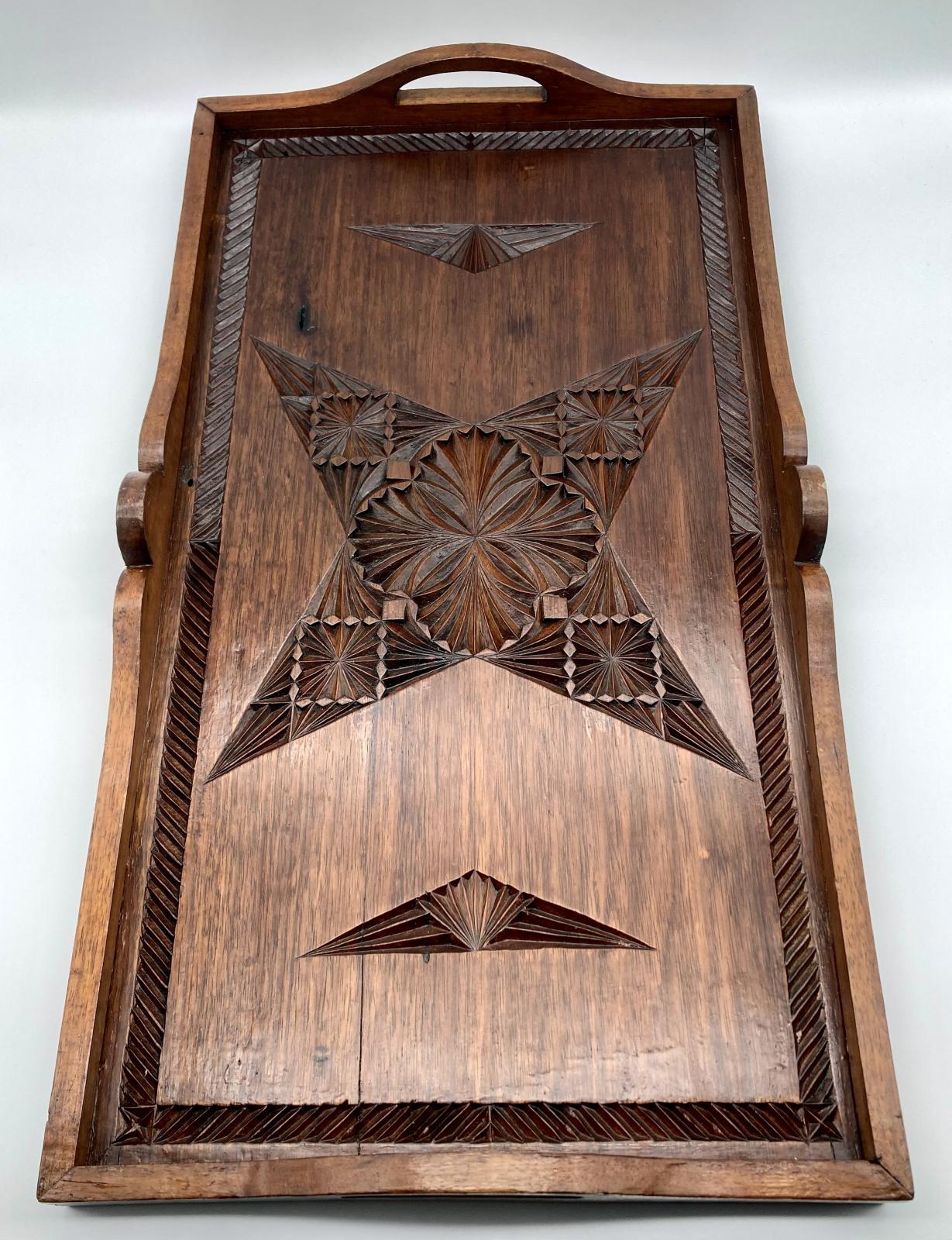
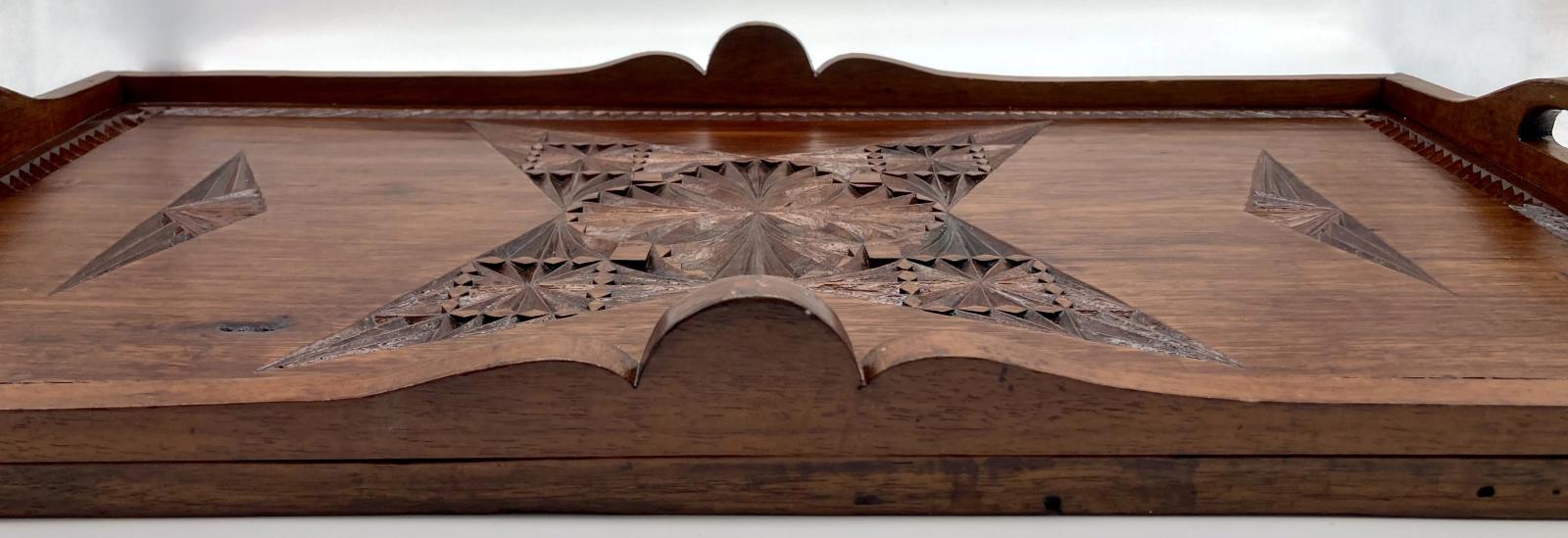
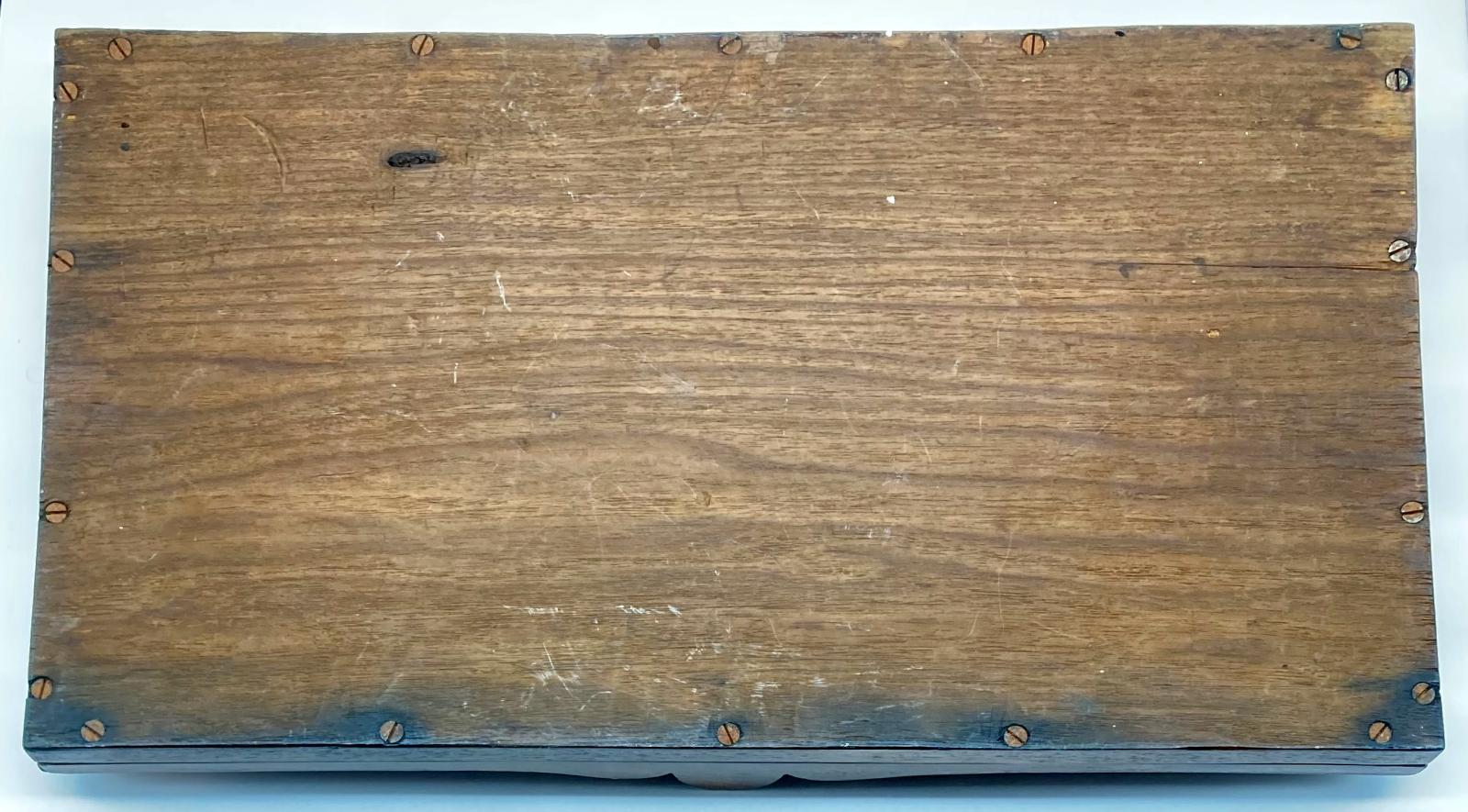
Scan this QR code to open this page on your phone ->

